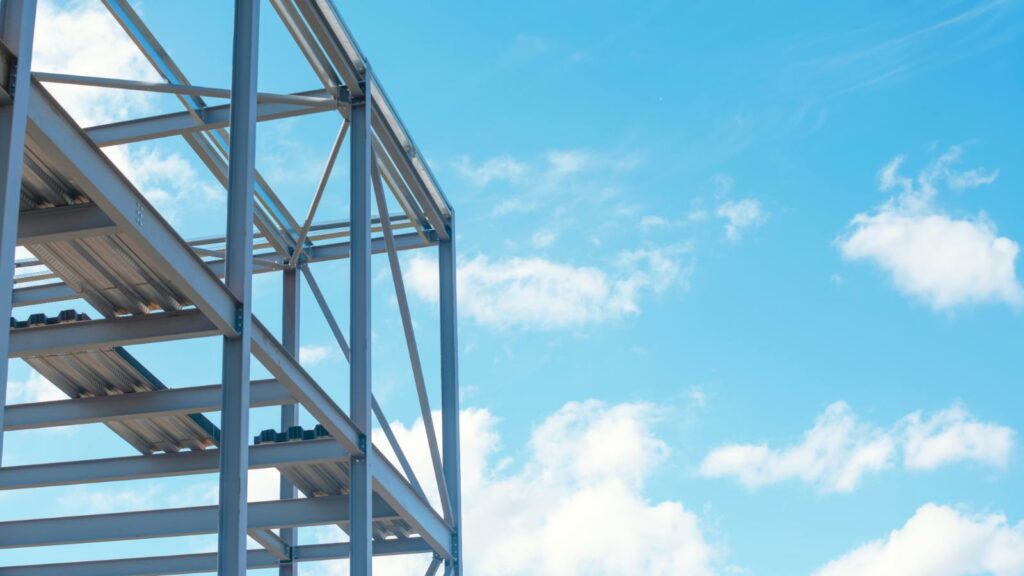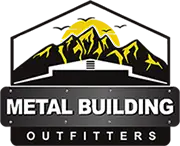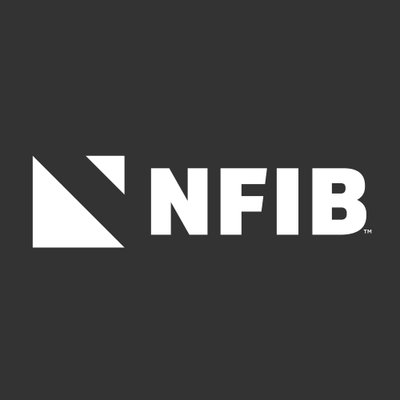
Contents
From routine cleaning to proactive inspections, there are several strategies you can implement to ensure your metal structure stands the test of time. By following a few key tips and tricks, you can protect your investment and maintain the durability of your building. So, what are some practical steps you can take to safeguard your metal structure for years to come?
Key Takeaways
- Regularly clean metal surfaces to prevent corrosion and extend lifespan.
- Apply protective coatings post-cleaning to safeguard against moisture and UV radiation.
- Implement rust prevention methods like applying protective coatings.
- Inspect the metal buildings for leaks and address them promptly to prevent water infiltration.
- Conduct routine inspections for wind damage and develop a windstorm preparedness plan.
Regular Cleaning
To maintain metal buildings, regularly cleaning the surfaces is essential for preventing corrosion and extending the lifespan of the structure. Deep cleaning plays a vital role in removing dirt, grime, and other contaminants that can degrade the surface of the metal over time. By incorporating a routine deep cleaning schedule, you can guarantee that your metal building remains in top condition for years to come.
When deep cleaning metal surfaces, appropriate cleaning agents are key. Make sure to select cleaners specifically formulated for metal surfaces to avoid causing damage. Additionally, consider using pressure washing equipment to effectively remove stubborn debris and buildup from the metal’s surface. This thorough cleaning process not only enhances the appearance of the building but also provides a protective foundation for subsequent maintenance steps.
Surface protection is another critical aspect of maintaining metal buildings. After deep cleaning the surfaces, applying a protective coating can help safeguard the metal against environmental factors such as moisture and UV radiation. These protective coatings act as a barrier, preventing corrosive agents from coming into direct contact with the metal and slowing down the oxidation process. By combining deep cleaning with proper surface protection, you can proactively preserve the integrity of your metal building and ensure its longevity.
Inspect for Rust
When inspecting for rust on your metal building, focus on rust prevention methods, early rust detection, and rust removal techniques.
By proactively identifying and addressing rust, you can prevent structural damage and extend the lifespan of your building.
Regular inspections and prompt treatment of any rust spots are key to maintaining the integrity and appearance of your metal structure.
Rust Prevention Methods
Inspect metal buildings regularly for signs of rust to proactively prevent corrosion damage. Corrosion control is essential to maintain the structural integrity of the building. Implementing metal preservation techniques, such as applying protective coatings or using galvanized materials, can greatly reduce the risk of rust formation.
Conduct thorough inspections of all metal surfaces, paying close attention to joints, seams, and areas exposed to moisture. Address any signs of rust promptly by removing the affected areas and applying rust inhibitors or primers to prevent further oxidation.
Early Rust Detection
Frequently inspecting metal surfaces for signs of rust is crucial to early detection and prevention of corrosion damage. To guarantee effective rust prevention and maintain the integrity of your metal building, follow these steps:
- Use a flashlight: Illuminate hard-to-reach areas for a thorough inspection.
- Check joints and seams: Rust often begins in these vulnerable spots.
- Look for discoloration: Any change in the metal’s color could indicate corrosion.
- Use a magnifying glass: Examine small areas closely to spot early signs of rust formation.
Rust Removal Techniques
To effectively address rust on metal surfaces, it is imperative to employ proper rust removal techniques. Rust is a common issue that can compromise the structural integrity of metal buildings if left unchecked. By utilizing the right methods, you can prevent further corrosion and extend the lifespan of your metal structure. Below is a table outlining some effective rust removal techniques to help you maintain your metal building:
| Rust Removal Techniques | Description | Effectiveness |
|---|---|---|
| Sandblasting | Abrasive blasting method | High |
| Chemical Rust Removers | Chemical solutions applied | Medium |
| Wire Brushing | Mechanical removal | Low |
Apply Protective Coatings
Consider applying a protective coating to safeguard your metal building against corrosion and weather damage. This step is vital in prolonging the lifespan of your structure and maintaining its aesthetic appeal.
To guarantee the effectiveness of the protective coating, follow these steps:
Surface Preparation: Before applying the protective coating, it’s essential to thoroughly clean the surface of the metal building. Remove any existing rust, dirt, or debris using a wire brush, sandblasting, or chemical cleaning methods. The surface should be clean and free of contaminants to allow the coating to adhere properly.
Coating Selection: Choose a high-quality protective coating that’s specifically designed for metal surfaces. Consider factors such as the environment the building is exposed to, desired longevity of the coating, and ease of application. Common options include epoxy coatings, polyurethanes, and acrylics, each offering different levels of protection and durability.
Application Technique: Follow the manufacturer’s instructions for the proper application of the protective coating. Ensure that the coating is applied evenly and covers all areas of the metal building. Pay special attention to corners, seams, and joints where corrosion is more likely to occur.
Maintenance: Regularly inspect the protective coating for any signs of damage or wear. Touch up any areas where the coating has worn off to prevent corrosion from setting in. By staying proactive with maintenance, you can make sure that your metal building remains well-protected for years to come.
Check for Leaks
Inspect the metal building for leaks to identify potential areas of water infiltration and prevent structural damage. Proper leak detection is vital for maintaining the integrity of your metal building. Regular inspections can help you catch leaks early on, preventing costly repairs down the line. When checking for leaks, pay close attention to areas where metal panels overlap, around openings like doors and windows, and at roof penetrations such as vents and skylights.
To address any leaks found during an inspection, consider implementing waterproofing techniques and sealing solutions. Waterproofing can help create an additional barrier against water intrusion while sealing solutions can effectively close off any gaps or cracks that may be allowing water to seep in. Maintaining your metal roof is also essential in leak prevention. Make sure to inspect the roof regularly for any signs of damage or wear and address any issues promptly.
| Waterproofing Techniques | Leak Detection |
|---|---|
| – Apply waterproof coatings to vulnerable areas | – Use water tests to identify leak sources |
| – Install flashing around openings | – Check for water stains on ceilings or walls |
| – Seal joints and seams properly | – Inspect metal panels for rust or corrosion |
| – Maintain gutters and downspouts | – Look for standing water on the roof |
| – Ensure proper drainage around the building | – Monitor for mold or mildew growth |
Maintain Gutters
Maintaining gutters is essential for preventing water damage and ensuring proper drainage around your metal building. Proper gutter maintenance is vital in safeguarding your structure from potential water-related issues. Here are four key steps to effectively maintain your gutters:
Regular Cleaning: Remove debris such as leaves, twigs, and dirt from your gutters to prevent clogging. Clogs can obstruct water flow, leading to overflow and potential water damage to your metal building.
Inspect for Damage: Regularly check your gutters for any signs of damage, such as cracks, rust, or loose fasteners. Addressing these issues promptly can prevent further deterioration and maintain efficient water drainage.
Ensure Proper Slope: Make sure your gutters are correctly sloped towards the downspouts to facilitate proper water drainage. Improper slope can cause water to accumulate, leading to potential leaks and structural damage.
Install Gutter Guards: Consider installing gutter guards to prevent debris from entering and clogging your gutters. Gutter guards can help maintain the efficiency of your gutters and reduce the frequency of cleanings required.
Monitor Structural Integrity
To ensure the structural integrity of your metal building remains sound, periodic monitoring for any signs of wear or stress is essential. A robust maintenance schedule is key to ensuring the longevity of your structure. Regular inspections for corrosion control are vital in preventing potential structural issues. By staying proactive and addressing any signs of corrosion promptly, you can maintain the stability and durability of your metal building.
Structural integrity monitoring involves a systematic approach. Start by establishing a routine maintenance schedule that includes detailed inspections of all structural components. Look for any signs of rust, corrosion, or physical damage that could compromise the building’s strength. Pay close attention to areas where moisture tends to accumulate, as these are more susceptible to corrosion.
Incorporating advanced techniques such as non-destructive testing can provide valuable insights into the condition of your metal building. These methods can detect hidden flaws or weaknesses that may not be visible during a visual inspection. By utilizing these tools, you can assess the structural health of your building more accurately and address any issues proactively.
Address Wind Damage Promptly
When facing wind damage, how can you effectively mitigate its impact on your metal building’s structural integrity? Wind damage prevention and emergency repairs are essential to maintaining the longevity of your metal building. Here are four vital steps to address wind damage promptly:
Regular Inspections: Conduct routine inspections to identify any signs of damage or wear caused by windstorms. Look for loose panels, damaged fasteners, or areas where the wind may have compromised the structure.
Immediate Repairs: Act swiftly to address any damage identified during inspections. Replace or repair damaged panels, tighten loose fasteners, and secure any components that may have been loosened by the wind.
Windstorm Preparedness Plan: Develop a thorough plan for windstorm preparedness. This plan should include protocols for securing the building, protecting vulnerable areas, and responding promptly to any wind-related damage.
Structural Reinforcement: Consider reinforcing vulnerable areas of your metal building to withstand high winds. This may involve adding bracing, upgrading fasteners, or installing wind-resistant components to enhance the overall structural integrity.
Manage Vegetation Growth
Addressing wind damage promptly in your metal building is vital for its structural integrity; now, let’s shift focus to managing vegetation growth to further enhance the longevity of your structure.
Weed control around your metal building is essential to prevent plant roots from compromising the foundation or growing into cracks, potentially causing structural issues. Regularly inspect the perimeter of your building and remove any weeds or unwanted vegetation. Consider using herbicides or landscaping fabrics to prevent weed growth effectively.
Incorporating landscaping solutions around your metal building enhances its aesthetic appeal and serves practical purposes. Planting shrubs or trees strategically can provide shade, reducing the heat absorbed by the metal structure and lowering cooling costs. Additionally, landscaping can act as a barrier against wind and erosion, protecting your building’s exterior.
Proper drainage is vital in preventing vegetation from becoming a problem near your metal building. Make sure that your landscaping slopes away from the structure to avoid water pooling, which can encourage weed growth and potentially lead to water damage.
Consider Professional Inspections
Considering the complexity of metal building structures, engaging professional inspections is essential for ensuring long-term durability and safety. Professional inspectors possess the expertise to identify potential issues early on, preventing costly repairs and ensuring the structural integrity of your metal building.
Here are four important reasons why you should consider professional inspections:
Corrosion Prevention: Professional inspectors utilize advanced techniques to detect corrosion in its early stages, allowing for timely interventions to prevent further damage. They can recommend appropriate coatings or treatments to mitigate corrosion and extend the lifespan of your metal building.
Metal Degradation Assessment: Through thorough inspections, professionals can assess the extent of metal degradation caused by factors such as weather exposure or structural stress. By identifying areas of concern, they can recommend reinforcement or repairs to prevent structural failures.
Safety Compliance: Professional inspections ensure that your metal building complies with safety regulations and standards. Inspectors can identify safety hazards and recommend corrective actions to maintain a secure environment for occupants and visitors.
Maintenance Planning: Inspections help in developing a proactive maintenance plan tailored to your metal building’s specific needs. By addressing issues early and scheduling routine maintenance, you can prolong the life of your structure and avoid unexpected breakdowns.
Investing in professional inspections is a proactive approach to safeguarding your metal building against corrosion, degradation, and potential safety risks, ultimately enhancing its longevity and performance.
Final Thoughts
Diligently following the maintenance tips outlined can guarantee that your metal building will stand the test of time with unparalleled resilience.
Neglecting these essential steps could result in catastrophic consequences for the structural integrity of your building.
Remember, a well-maintained metal building isn’t just a structure but a demonstration of your commitment to quality and longevity.
Don’t underestimate the power of consistent upkeep in preserving your investment for years.
Recent Posts
Efficient Construction of Large Metal Warehouses
When it comes to the optimization of building substantial metal storage facilities, one must consider
Why Choose Energy-Efficient Metal Warehouse Construction?
When it comes to selecting the construction method for your warehouse, choosing energy-saving metal construction
What Is the Key to Efficient Metal Warehouse Construction?
When it comes to efficient metal warehouse construction, understanding the key elements that drive success


